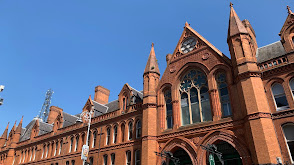
Dublin's Evolving Transport Network: Growth, Challenges, and Future Developments
Posted by Webjuice SEO Agency in Dublin on
Dublin, Ireland’s vibrant capital, has a dynamic and evolving transport network that is crucial for its economic growth and quality of life. The city is making substantial investments in improving its road, bus, cycling, rail, and air transport systems to meet the needs of both residents and visitors. However, like many major cities, Dublin faces significant traffic congestion, with the TomTom Traffic Index ranking it as one of the most congested cities in Europe and the world.
The M50 motorway, a key route that circles the city, connects major national highways, providing vital links to the rest of the country. Additionally, the Dublin Port Tunnel, which opened in 2006, caters mainly to heavy vehicles, providing essential access between Dublin Port and the M1 motorway.
Dublin's bus network, operated by Dublin Bus and Go Ahead Ireland, boasts nearly 200 routes covering the city and surrounding suburbs. The TFI Leap Card offers seamless payment across all public transport options, making it easier for commuters. The BusConnects programme, which introduces new spine and orbital routes, aims to improve bus service frequency and accessibility. Furthermore, the fleet is transitioning to zero-emission buses, with 85% of buses expected to be fully electric by 2032.
Cycling in Dublin has seen a surge in popularity, with a significant increase in the number of cyclists, aided by the Dublinbikes rental scheme, which started in 2009, and over 200 kilometers of dedicated cycling lanes. Despite this, the city has fallen in the global rankings of bike-friendly cities in recent years.
Dublin is also well-connected by rail. Heuston and Connolly stations serve as the primary railway hubs, offering links to suburban and commuter areas, while the DART system provides an electrified rail network along the coast. The Luas tram system, operational since 2004, connects various parts of the city with interconnecting lines, and the Metrolink, a metro system, is under development to further enhance connectivity across the city.
Air travel is another crucial aspect of Dublin’s transport infrastructure. Dublin Airport, the busiest in Ireland, serves as a key hub for both Ryanair and Aer Lingus, offering domestic, short-haul, and long-haul flights. In recent years, the airport has experienced substantial growth, especially in transatlantic traffic, solidifying Dublin’s position as an important European and global gateway.
Dublin’s transport network is continuing to expand and modernize to keep pace with the city's development. From new bus routes and tram extensions to the upcoming Metrolink and efforts to reduce emissions, Dublin is taking significant steps toward creating a sustainable, efficient transport system for the future.